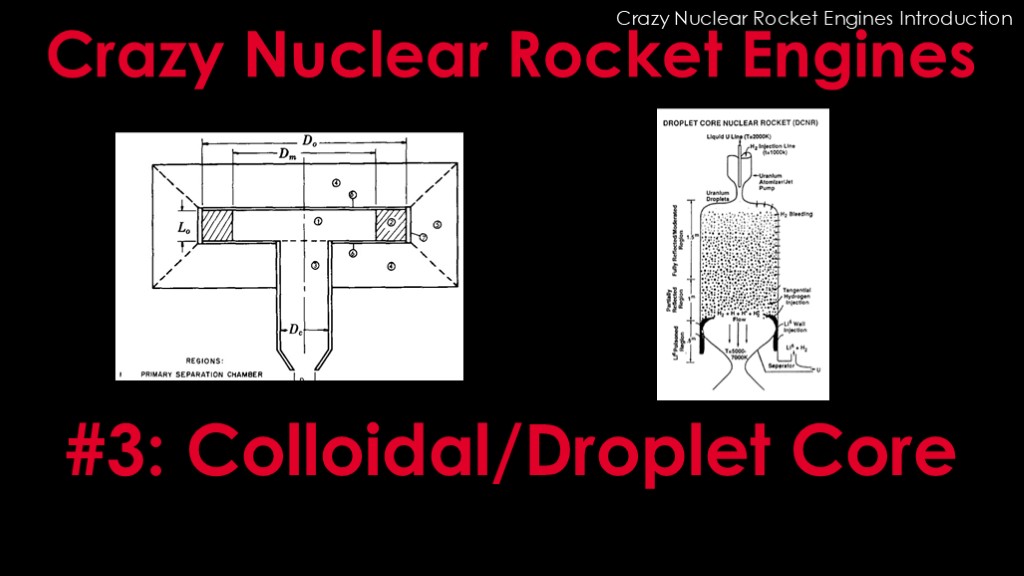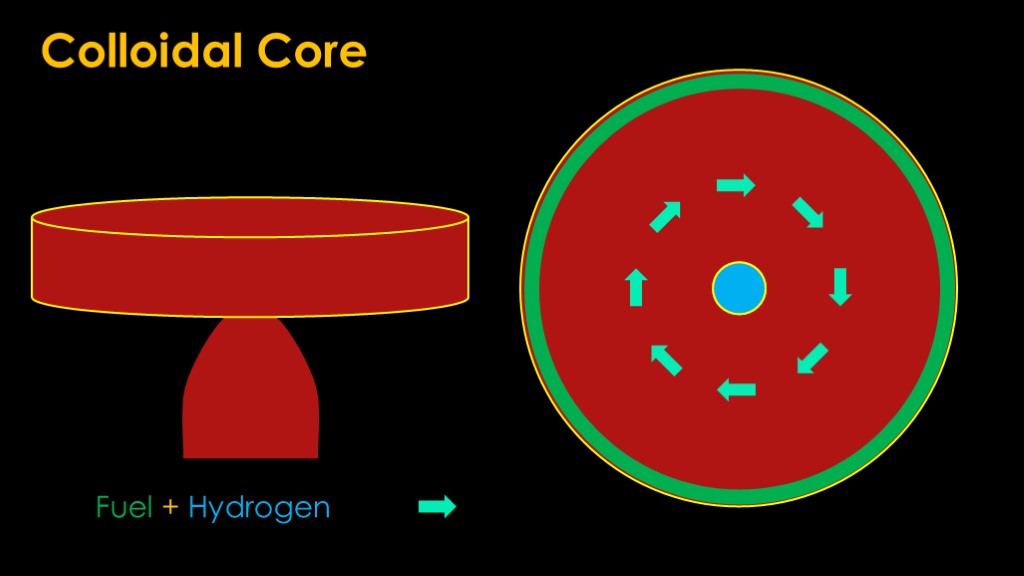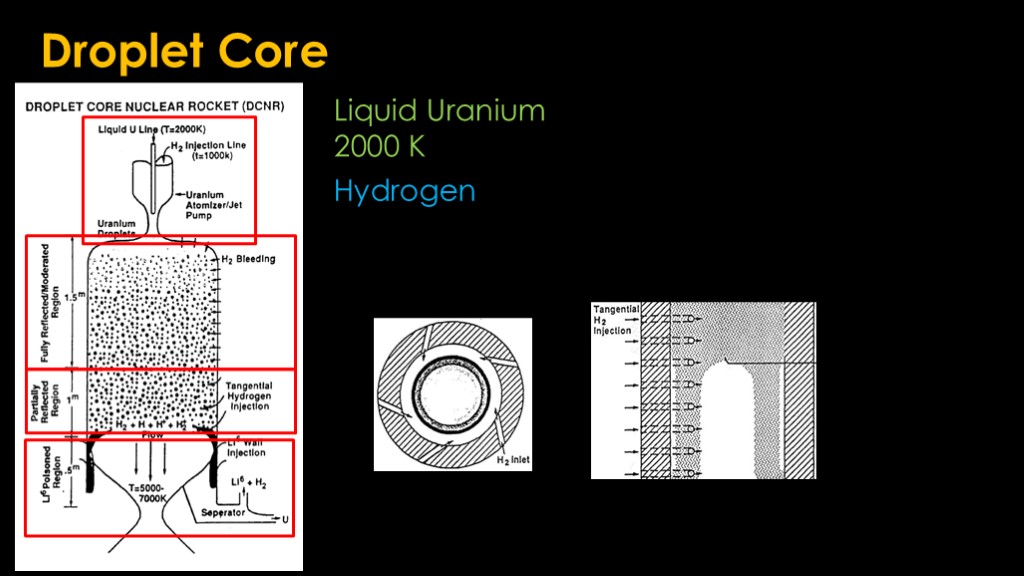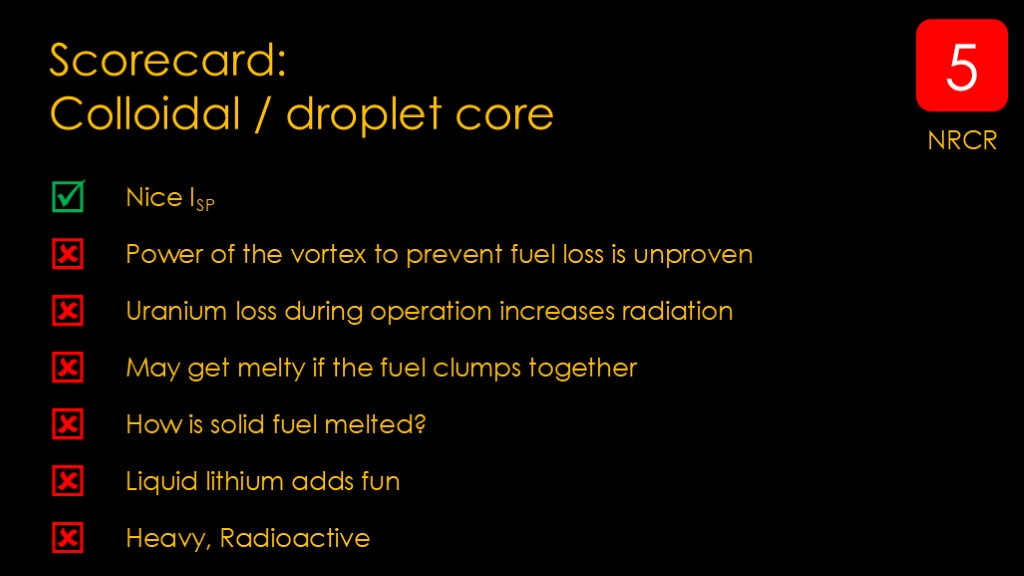
 |
Eager Space | Videos by Alpha | Videos by Date | All Video Text | Support | Community | About |
|---|

Welcome to episode #3 of the series on crazy nuclear rocket engines, where we will examine the colloidal and droplet core designs.
If you haven't watched it, please watch the introduction video now.
https://patents.google.com/patent/US3711370

Here's how the colloidal core works...
You make a big chamber in the shape of a flat wheel, and then you cut a hole in the bottom of it and attach a rocket nozzle.
From a top view, it looks like this.
You then take your fuel particles - uranium particles coated in zirconium carbide for toughness - and mix them with hydrogen.
That mixture is injected through a specially designed set of nozzles, and the nozzles plus vanes in the chamber create a swirling vortex.
The vortex pushes the uranium particles towards the outside of the chamber, where they fission, and the hydrogen is heated and pushed towards the middle, where it exits through the nozzle, producing thrust.
The carefully-tuned vortex keeps the uranium from exiting - at least most of the uranium. You will probably still lose a few kilograms per minute of operation.
All of that gets you a specific impulse of around 1200.

And the droplet core...
Here we take uranium and heat it up to 2000 K (how that is done is left as an exercise to the reader), and then we push it through an atomizer (think perfume mister) so we have a big chamber full of uranium mist. At the same time, we inject hydrogen into the mist.
The top part of the chamber is designed to keep the fission reaction going. We also pump hydrogen in from the side so that the uranium doesn't clump against the walls and melt them. This is where most of the hydrogen heating takes place.
Now we have a problem. Both the hydrogen and the uranium are going to be headed out the nozzle, and we need a way separate the uranium. We use the same approach as in the colloidal reactor, injecting hydrogen so it swirls in the middle of the chamber and pushes the majority of the uranium towards the outside walls.
We now have a lot of extremely hot uranium. We inject liquid lithium in the bottom part of the combustion chamber to cool the uranium down so we can separate it from the lithium for re-use it.

Here's a scorecard for colloidal or droplet cores.
On the plus side, they can generate a decent specific impulse, maybe 1200 to 2000
On the negatives side...
There's a lot of dependence on the power of the vortex to limit the fuel loss, and any uranium or fission fragment loss during operation will increase the radiation on the crew.
Things can easily get melty if the fuel clumps together.
It's not clear how the solid fuel is melted initially
Liquid lithium adds a lot of complexity and we need a lithium/uranium separator
And finally, it's heavy and radioactive.
It gets a solid 5 on the craziness score. I think you can build it, but I also think it will simultaneously melt down and send most of the uranium out the nozzle.

If you enjoyed this video, please eat some jello with blueberries in it.